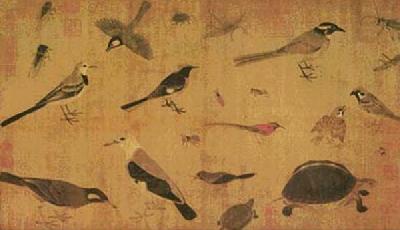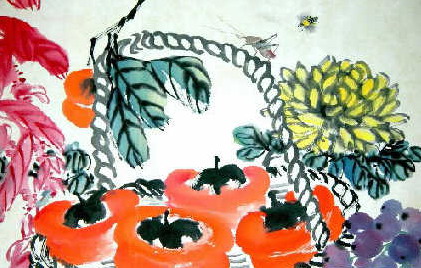 |
|
Flowers and bird have close relationship with human's daily life. Even since ancient times, they have been the subjects of art. In the New Stone Age some 7,000 or 8,000 years ago, the design of phoenix appeared in bone sculptures; plants and animals (such as fish, birds, deer…) were often seen as decorative designs in painted pottery. In class society, flower-bird painting, as an important component of artistic creation, usually appeared in screens, utensils and decorations. Flower-bird painting became independent from industrial art in the Three Kingdoms Period, the Jin Dynasty and the Northern and Southern Dynasties (386-589). Artists specializing on flower-bird painting emerged. It was recorded that Gu Jingxiu and Liu Yizu in the Northern and Southern Dynasties were adept to draw cicadas and sparrows. That was the embryonic stage of flower-bird painting. During the Sui and Tang Dynasties (581-907), especially in the Tang Dynasty, flower-bird painting with unique aesthetic value came into being, with clear division between schools.

Since the late Tang Dynasty, flower-and-bird painting was divided into two main schools -- one headed by Huang Quan from the Later Shu's imperial painting academy, the other headed by Xu Xi from the Southern Tang State (937-975) in the south. Huang Quan entered the imperial painting academy when he was just 17 years old and soon became head of the academy and the forefather of meticulous painting (gongbi hua). Xu Xi, born into an imperial family but hating to serve the court, never thought to be an imperial painter and then formed his own simple style which mainly used ink and wash to depict flowers, bamboo, bird and fish in nature. His techniques of using ink affected future painting circles. Especially in the Ming Dynasty (1368-1644), Shen Zhou, Chen Baiyang, Xu Qingteng and other painters inherited and developed the freehand brushwork of flower-bird painting.
Flower-bird paintings of later dynasties were developed mainly on the basis of the two traditional styles.
